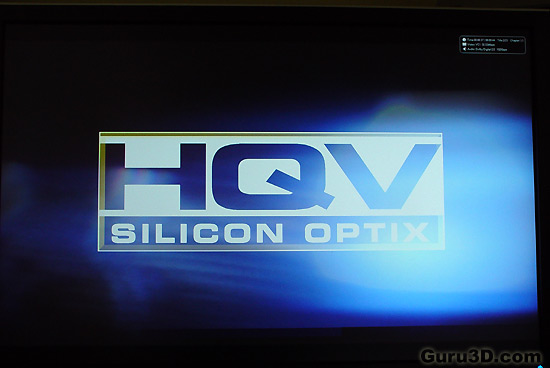Page 3
Avivo HD
Your ATI Radeon series 2000 graphics card has a function called Avivo HD. The key advantages of Avivo HD technology are twofold. First and foremost to offload the CPU by allowing the GPU to take over a huge sum of the workload while being more energy efficient aware. HDTV decoding can be very demanding for a CPU. These media files can peak to 20 Mbit/sec easily as HD streams offer high-resolution playback in 1280x720p or even 1920x1080p without framedrops and image quality loss.
By offloading that big task for the bigger part of the graphics core, you give the CPU way more headroom to do other things, which actually makes your PC run normal.
Make no mistake though, as our tests have proven, any modern CPU is quite capable of doing the same job just fine. But a combination of factors offer you stutter-free high quality and high resolution media playback. All standard HDTV resolutions are of course supported, among them the obvious 480p, 720p and 1080i modes and now also 1080p (P=Progressive and I=Interlaced).
The new HD 2000 series will also offer you HD noise reduction, which is a great feature with older converted films. And this is where we land at the second advantage of Avivo, Image Quality.
Avivo HD can offer a large amount of options that'll increase the IQ of playback. This can be managed with a wide variety of options. Obviously AMD has some interesting filters available in the Avivo HD suite like advanced de-interlacing, which can greatly improve image quality while playing back that HD-DVD, MPEG2, TS AV-1 or H.264 file (just some examples). Aside from that, things like colour corrections should not be forgotten. All major media streams are supported by AMD with Avivo HD. And yes, High Definition H.264 acceleration, which will eventually become a big, new and preferred standard, is also supported.
AMDs upgraded Avivo with a new Universal Video Decoder, also known as UVD, and the new Advanced Video Processor, or AVP. UVD actually made its debut in the OEM-exclusive RV550 GPU core. UVD provides hardware acceleration of H.264 and VC-1 high definition video formats used by Blu-ray and HD DVD. The AVP allows the GPU to apply hardware acceleration and video processing functions while keeping power consumption low.
UVD expands on the previous generations AVIVO implementation to include hardware bit stream processing and entropy decode functions. Hardware acceleration of frequency transform, pixel prediction and deblocking functions remain supported, as with the first generation AVIVO processing. AMDs Advanced Video Processor, or AVP, has also made the cut for low power video processing.
UVD is a feature only present in HD 2400 and 2600 series, not 2900.
PureVideo HD
The in April released GeForce 8600 and 8500 products will have a newly revised video engine that will help you to decode all that Blu-ray and HD-DVD madness. This engine and respective software is labeled Purevideo HD.
The video engine provides HD video playback up to resolutions of 1080p. G84 and G86 support hardware accelerated decoding of H.264 video as well. The cards also feature advanced post-processing video algorithms. Supported algorithms include spatial-temporal de-interlacing, inverse 2:2, 3:2 pull-down and 4-tap horizontal and 5-tap vertical video scaling.
PureVideo HD is is a video engine built into the GPU (this is dedicated core logic) and thus is dedicated GPU-based video processing hardware, software drivers and software-based players that accelerate decoding and enhance image quality of high definition video in the following formats: H.264, VC-1 and MPEG-2 HD.
In my opinion two key factors are a big advantage. First off to allow offloading the CPU by allowing the GPU to take over a huge sum of the workload. HDTV decoding through a VC-1 file, for example, can be very demanding for a CPU. These media files can peak to 20 Mbit/sec easily as HDTV streams offer high-resolution playback in 1280x720p or even 1920x1080p without framedrops and image quality loss. Secondly image quality enhancements like deblocking.
The engine got revised. The previous engine was already rather good. It did get a little better though as the new engine offloads another chunk of what the CPU normally does namely it now handles Bitstream processing (format of the data found in some stream of bits used in a digital communication or storage application) and a function called inverse transform as well. Unfortunately .. the biggest format being used right now is VC-1 and NVIDIA does not fully handle it's bitstream decoding. It does optimize the VC-1 stream though as our tests will show.
To be able to use PureVideo HD you'll need a GeForce 8600 or 8500, PureVideo software or highly recommended the latest PowerDVD.

